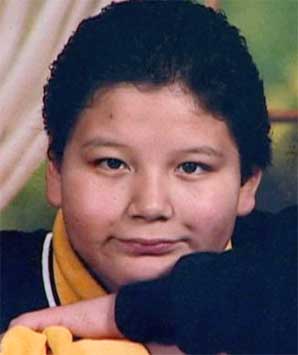 An expanded version of my Indian Comics Irregular essay Red Lake Tragedy: Culture Kills:
An expanded version of my Indian Comics Irregular essay Red Lake Tragedy: Culture Kills: An expanded version of my Indian Comics Irregular essay Red Lake Tragedy: Culture Kills:
An expanded version of my Indian Comics Irregular essay Red Lake Tragedy: Culture Kills:
On March 21, Jeffrey Weise shot and killed ten people on the Red Lake Indian reservation. Some thoughts on this tragedy, and our culture's role in causing it, from the news accounts that followed:
Life (and death) on the rez
First, an overview of the forces in Weise's life. From the Washington Post:
Minnesota Killer Chafed at Life On Reservation
Teen Faced Cultural Obstacles And Troubled Family History
By Blaine Harden and Dana Hedgpeth
Washington Post Staff Writers
Friday, March 25, 2005; Page A01
RED LAKE, Minn., March 24 — In the months before he killed his grandfather, his classmates and himself, Jeff Weise painted an utterly nihilistic — and often eloquent — word portrait of life here on the Red Lake Indian Reservation.
He described the reservation in Internet postings as a place where people "choose alcohol over friendship," where women neglect "their own flesh and blood" for relationships with men, where he could not escape "the grave I'm continually digging for myself."
In his dark and self-pitying depictions of life on the reservation, Weise appears to have drawn from his troubled personal history: When he was 8, his father committed suicide on the reservation after a standoff with police. About four months later, his mother suffered severe brain damage in an alcohol-related car accident.
Before that accident, while Weise was living with her in the suburbs of Minneapolis, his alcoholic mother often locked him out of her house and her boyfriend locked him in a closet and made him kneel for hours in a corner, said his grandmother, Shelda Lussier, 54, in whose home on the reservation the boy had lived since age 9.
In an interview outside her home, Lussier said that Weise, a hulking boy who stood 6 feet 3 inches tall and was almost always dressed in black, tried to hurt himself 14 months ago by jabbing his arms with a pen.
With his self-professed loathing of reservation life and burdened by the psychopathologies of his parents, Weise on Monday joined the ranks of America's schoolhouse mass murderers. The 16-year-old killed nine people — his grandfather, his grandfather's female companion, a school guard, a teacher and five schoolmates — before killing himself.
Still, Weise was not all wrong in his assessment of Red Lake. Like many Indian reservations, especially the poor and isolated ones in and around the Great Plains, this can be a dangerous, soul-crushing place to grow up.
Compared with the tidy Denver suburb where two teenage boys went on a well-armed rampage at Columbine High School, killing 13 people and then themselves in 1999, Red Lake exists in a distant and exponentially more dismal dimension of the American experience.
"I'm living every mans nightmare," Weise wrote online in January. "This place never changes, it never will."
If that sounds like teenage overreaching, Sister Sharon Sheridan, 73, principal at St. Mary's Mission School on the reservation, said this of the shootings: "You can't condone what happened here, but you sure can understand it."
Warning Signs
In Washington this week, the director of behavioral health for the Indian Health Service, which provides health care here and for hundreds of other reservations, said the complex behavioral problems that have scarred several generations of Weise's family are all too common.
"This is a tragedy that I have seen the potential for in so many other places in Indian country," said Jon Perez, who is also a psychologist for adolescents. "I am worried about making sure that this doesn't have to happen again."
As the months, weeks and days ticked by before Monday's shooting, Weise was sending clear signals — what Joe Conner, a clinical psychologist and expert on mental health care for Native Americans, described as "huge red flags and baggage everywhere" — of serious adolescent mental illness.
Twice in the past school year, he stopped attending Red Lake High School — and received home tutoring — because he became severely depressed and was unable to handle teasing from his classmates, his grandmother said. She said the last time he had been at school — before he stormed in with guns blazing on Monday — was about five weeks ago.
The last time he saw a mental health professional at the Red Lake hospital was on Feb. 21, she said. She remembers the date because it was the same day he refilled his prescription for 60 milligrams a day of Prozac, which he had been taking since last summer.
Online, he seemed to be reaching out in strange directions, especially for a Native American kid. He wrote sympathetically about Hitler and grumbled about racial interbreeding among tribal members.
But there appears to have been no one in the school or on the reservation who saw the red flags.

Ethnic Hardships
A bleak mountain of federal research suggests the extraordinary risks and hardships of growing up Indian, compared with growing up as a member of any other ethnic group in the United States.
The annual average violent crime rate among Indians is twice as high as that of blacks and 2 1/2 times as high as that for whites, according to a survey last year by the Justice Department.
Indian youths commit suicide at twice the rate of other young people, according to the U.S. Commission on Civil Rights. The overall death rate of Indians younger than 25 is three times that of the total population in that age group.
Compared with other groups, the commission found, Indians of all ages are 670 percent more likely to die from alcoholism, 650 percent more likely to die from tuberculosis, 318 percent more likely to die from diabetes and 204 percent more likely to suffer accidental death.
And despite considerable income gains in the past 15 years, some of it because of Indian gambling operations, Native Americans remain the poorest ethnic group in the country, with about half the average income of other Americans.
When it comes to young Indians, the statistical picture here on the Red Lake reservation, home to about 5,000 tribal members, is even bleaker than the national average. A third of teenagers on this reservation are not in school, not working and not looking for work (compared with 20 percent on all reservations), according to census figures.
A survey last year by the Minnesota departments of health and education found that young people here are far more likely to think about suicide, be depressed, worry about drugs and be violent with one another than children across the state. At St. Mary's Mission School, an elementary school student recently painted a poster for her father: "Dad, don't do cocaine any more."
The state survey of ninth-graders found that at Red Lake High, 43 percent of boys and 82 percent of girls had thoughts about suicide, with 20 percent of boys and 48 percent of girls saying that they tried it at least once.
Three months ago, Weise wrote online about suicide: "I'm starting to regret sticking around, I should've taken the razor blade express last time around. . . . Well, whatever, man. Maybe they've got another shuttle comin' around sometime soon?"
The Region's History
Compared with other reservations in Minnesota and across the country, Red Lake appears to have had an especially toxic history of violence, drug problems and gang activity. The curriculum now includes courses in anti-gang training, anti-bullying training, drug and alcohol abuse prevention, and instruction in fetal alcohol syndrome.
School Superintendent Stuart Desjarlait said a gang shooting at the high school in 1996 prompted federal funding for metal detectors, security cameras and security guards. The security system, however, proved all but useless when Weise showed up at the high school on Monday, driving a police cruiser he had stolen from his slain grandfather, wearing a bulletproof vest and armed with three weapons. Police responded quickly, but it took only about 10 minutes for Weise to kill seven people and himself.
Across the reservation in the past 30 years, there have been periodic outbreaks of violence that caused fatalities. During a riot over tribal leadership in 1979, two teenagers were killed and several buildings were burned as scores of tribe members, many drunk and carrying rifles, took over the tribal police station.
The tribe's geographic isolation here in the northwest corner of Minnesota has been exacerbated by a long tradition of self-enforced isolation. For more than a century, the tribe has resisted federal programs that would open up the reservation to private land ownership. "We have just not ever been too crazy about white people coming around the reservation," said Lee Cook, a former member of the tribal council.
Portrait of a Boy
Weise was born in Minneapolis but spent most of his first three years with his father on the reservation, his grandmother said. His parents never married, she said, and his mother took the boy back to Minneapolis when he was 3. This shuffling from reservation to city is common among Native Americans, as two-thirds of them now live in and around cities.
The boy was often unhappy with his mother. According to Gayle Downwind, a teacher on the reservation who knew Weise and whose son, Sky Grant, was one of his best friends, he was often tormented by his mother's problems with alcohol.
"When he was younger, he said he would run out of the house because there would be yelling and alcohol," she said. "He wasn't sure where he would be going. He ended up at a police station."
He did not like being on the reservation, said his friend Grant, who had Weise at his home for sleepovers nearly once a week for seven years. He refused to participate in powwows and avoided all traditional Indian activities, Grant said.
At school, he was an indifferent student. Peers teased him about his black outfits and his ungainly bulk (well over 200 pounds), and he often became agitated in class. He failed eighth grade and was required to take a nonacademic class, making wigwams, growing wild rice and doing other traditional activities. His friend's mother, Downwind, was his teacher. "He wasn't doing any work," she said. "He didn't function academically. He just sat there and drew pictures."
Grant called all of Weise's drawings "dark," saying, "He drew pictures of war, people getting shot."
Seventeen days before the shooting, Weise brought a videotape of the movie "Elephant," based on the killings at Columbine High, to Grant's house and insisted that they fast-forward to the shooting scenes. "He liked the gore," Grant said.
When the gory part was over, Grant said, Weise got up and went to his grandmother's house. He said he was going home to get his medication and gave the impression that he would be right back. He never came back, and that was the last time Grant saw him.
Whatever the trigger might have been for Weise to turn fantasy in action, it was not apparent to the people he lived with — his grandmother, an aunt and a 15-year-old cousin.
At noon on the day of the shootings, his grandmother returned home for lunch and found Weise sitting on the couch in the living room, eating a turkey sandwich and drawing. When she came home again at 3 that afternoon, he was gone. He did not leave a note.
Staff writers Ceci Connolly in Minneapolis and Sylvia Moreno in Red Lake and special correspondent Dalton Walker in Red Lake contributed to this report.
© 2005 The Washington Post Company
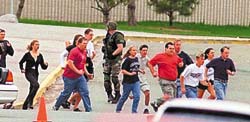
Red Lake's children, up close
A survey of Weise's peers suggests what he may have thought and felt. From the Pioneer Press:
Posted on Fri, Mar. 25, 2005
Despair, hopelessness a daily struggle for children of Red Lake
BY PAUL TOSTO
Pioneer Press
Sixth- and ninth-graders in the Red Lake schools struggle with thoughts of suicide and worthlessness at rates far higher than children statewide. They also say their lives lack purpose and they run away at rates greater than the Minnesota norm.
Their responses to the Minnesota Student Survey last spring offer a glimpse at how very hard life can be for many young people at Red Lake. Their answers — most from children ages 12 to 15 — reveal lives of great hope and at the same time great pain. Nearly 80 percent of Red Lake's ninth-grade girls, for instance, said they'd like to go to college after high school.
By contrast, about 81 percent admitted they'd thought about suicide at some point in their young lives — nearly twice the state average.
The survey doesn't say why students feel the way they do. Nor does it come close to explaining why 16-year-old Jeff Weise killed. It does show children clinging to hope and in desperate need of help.
"If you look at the kids with all the things they feel bad about, look at how many want to go to college and go and do something amazing with their lives," said Yvonne Novack, who supervises American Indian education at the Minnesota Education Department.
Novack, who has friends and family at Red Lake, said the surveys should be taken with some skepticism — some kids don't take it seriously — but added that the responses on suicide and mental health issues match up with what she's seen in other American Indian populations.
"It's a contradiction with the suicide rates. You see how bright they are and how they can go forward," she said. "How do you bring them out of their desperation and show them that the dreams of college are really there?"
Seventy-seven students, or about two-thirds, of Red Lake sixth-graders filled out the survey while 56 of the district's ninth-graders, roughly half, did the same. Among its findings, the surveys showed:
• Twenty-three percent of ninth-grade boys and 52 percent of ninth-grade girls said they had run away at least once in the past 12 months, compared to 11 and 15 percent statewide.
• About half the sixth-graders agreed they didn't have much to be proud of (it was about 21 percent statewide), though about 80 percent believe they can do things as well as most other people their age.
• Asked to respond to the comment, "Sometimes I think that I am no good," two-thirds of ninth-grade girls agreed to some extent while statewide about two-thirds disagreed.
Novack says it's unusual for an American Indian student to lash out like Weise, whose online postings showed threads of anger, despair and suicidal thoughts in the extreme.
"Usually when people have such anger they take it out against themselves" or sometimes at parties, she said. "It rarely happens at schools."
Red Lake sixth- and ninth-graders reported being insulted by other students at rates generally lower than other Minnesota schools. More than 90 percent believed at least some kids in their school are friendly. Yet, in another seeming contradiction, they also felt more unsafe at school than their classmates statewide.
Cody Thunder, a 15-year-old student who got shot in the hip on Monday, said he felt safe at Red Lake High School before the shootings. "I thought the security guards would keep us safe."
But his feelings drastically changed by Thursday afternoon. "I don't feel like going back to school," he said from North Country Regional Hospital.
Superintendent Stuart Desjarlait said Red Lake installed security cameras and guards at the high school during the 1996-97 school year, and just recently moved into a new addition. Administrators had crisis plans in place, which they practiced during a disaster drill just a year and a half ago.
"It goes to show you, if something's going to happen, it's going to happen," he said. "No matter what you do, no matter who you are, not matter what precautions you take."
While the survey shows the difficult emotional road many students travel, other data shows how difficult it can be to succeed in school and beyond. College may be a goal for many students, but Red Lake resources are tight and many students struggle academically.
• Just half of Red Lake high school students passed state reading and math tests. Only half of 2002-03 seniors graduated that year. The only area where Red Lake students met state requirements was in showing up for school. More than 80 percent did so every day.
• Almost 90 percent of Red Lake high school students are poor, and almost a quarter are in special-education classes, though the district spent less than 40 percent of the state average on student-support services. Red Lake taxpayers also pay more than 225 percent of the state average in school property taxes, despite home values being about a quarter of the state average.
• About 20 percent of Red Lake teachers aren't licensed in what they teach and more than 12 percent were in their first year of teaching. Statewide, less than 7 percent of teachers aren't certified for their subject and less than 4 percent were in their first year. Red Lake teachers in 2002-03, the most recent year data was available, were paid an average $32,354, far less than the Minnesota $45,504 average.
Despite the survey findings, some students painted a brighter picture of Red Lake Senior High School.
Ninth-grader Whitney Spears said she never worried for her safety before the shootings. And she said she has a counselor she is comfortable confiding in if she has problems.
Spears said she's not aware of any drug or alcohol problems in her friend's lives — nor have any of her friends experienced violence at school.
The state and school district have made efforts to make things better at Red Lake. Gov. Tim Pawlenty earlier this year agreed to include $22.1 million in his 2004 bonding proposal for construction of a new Red Lake Middle School, citing unexpected student enrollment growth, which has resulted in crowded and deteriorated facilities.
Last school year Red Lake received $30,870 from the U.S. Education Department for a violence prevention and anti-bullying curriculum for third- through eighth-graders, teacher training and establishing restorative justice as a problem-solving approach to discipline, hoping to reduce the number of students who reported not feeling safe in their schools and to reduce drug and alcohol use.
Novack said she's been in contact with Red Lake school officials since the shootings, and the state is poised to offer help.
"We all have to stand back and let them go through this grief period," she said. "Let them bury their children and respect their privacy. When they're ready, we're here to help them … I think good things will happen."
Staff writers Tammy J. Oseid, Megan Boldt and Cynthia Boyd contributed to this story.
"Lives of great pain." Did Indian children feel this way before the advent of Europeans, with their guns and germs? Did American children feel this way before the advent of modern society, with its media-saturated hyper-competitiveness? Undoubtedly not.
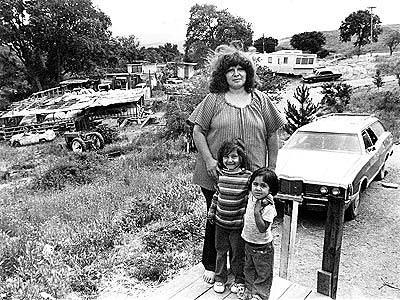
What ails the Indians
Many would say the problems facing Indian youths—cultural obstacles and troubled family histories—are merely symptoms of the underlying problem. From the Houston Chronicle:
March 24, 2005, 8:56PM
Another shooting, another chance to ignore problem
Indian reservations suffer afflictions we refuse to see
By ERIC ANTHAMATTEN
Once again, we have another horrendous school massacre on our hands. On Monday, a 16-year-old Minnesota student went on a shooting spree that left 10 dead. The student ended the tragedy in classic American school rampage fashion by turning the gun on himself.
The media will show pictures of grieving friends and family, and they will demonize the teen as yet another sadistic and twisted individual. There will be outrage from the left about the accessibility of guns, and perhaps some stories about the specific situation of the family or the psychological abnormalities of the shooter. Everyone will shake their heads in disapproval, but only momentarily. The shock will be soothed as the news quickly switches to the circus of the Michael Jackson trial, or the very important metaphysical question as to whether or not Hogzilla was real.
But all in all, the incident will be treated as an isolated anomaly, an event that occurred in another state in some school in a galaxy far, far away. Of course, the grief of the families affected by the incident should not be minimized; the teen should certainly be held responsible for his actions, and the question of accessibility of firearms should be addressed (yet again). All of this is horrible and should not be minimized. But an important issue (perhaps the most important issue) will be systematically ignored.
The shooting occurred on the Red Lake Indian Reservation. Forty-percent of the reservation's residents are unemployed and living in poverty. Red Lake High School scored second-lowest in the state for 11th-grade math and third-lowest for 10th-grade reading. Three hundred students attend the high school.
What will be ignored is the glaring fact that we have perpetually pushed the original stewards of this land into holes of abject poverty and neglect. We will overlook the fact that these natives at every turn have been uprooted from their symbiosis with Earth and have been forced to live like parasites, sucking their nourishment from casinos that are in turn fed by the lower middle-classes' dreams of relieving their own poverty by some favor from fortune.
We will continue to close our eyes to all those schools and their students who are continually left behind because tax cuts to the parents of those kids who go to better-performing schools are more important, because we are more interested in spending our money on bombs instead of books. Our moral leaders will perhaps raise the issue of our nation's declining values, or about the decay of community, but they will feel no dissonance in their conscience as they drive their luxury cars home to their three-story suburban homes.
There are many variables involved in these tragic incidents, and it is difficult to swim through the complexity and even begin to make some sense of it. But the mainstream media and our political leaders will focus only on those elements that more easily and quickly invoke pathos in their viewers and constituents; they will ignore the underlying issues that are really the source of these surface manifestations. They emphasize the little boils that pop up on the skin, blemishes that reveal a sickness that goes much deeper than epidermis.
We will close our eyes to the deeper affliction because facing this disease would require a healing and a purging that would take much more time and patience. A diagnosis would reveal pockmarks on the subterranean parts of our nation's soul.
Red Lake's tribal chairman, Floyd Jourdain, said, "[Monday was] without doubt, the darkest day in the history of our tribe."
Yes, it was a very dark day in the history of all native tribes, a dark day for those millions of students who are left behind every day, and a dark day for America.
Anthamatten is an instructor of philosophy at Houston Community College.
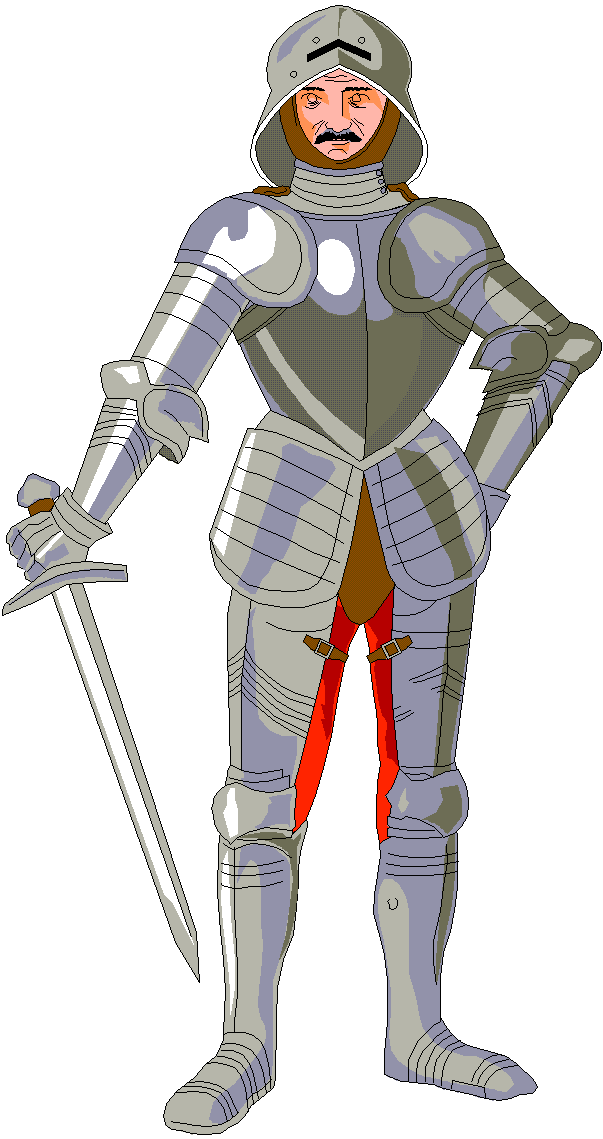
NEWS & COLUMNS
Red Lake Whitewash
By Mark Ames
Amid all of the fake soul-searching in the aftermath of the recent Red Lake high school shooting, one question is hysterically avoided: Was Jeff Weise's massacre justified?
The best argument for considering whether or not Weise was provoked comes from the hysterical official reaction: a cataract of lies, moral acrobatics, grotesque cliches and laughable contradictions all of which point to a giant cultural cover-up. The goal of this cover-up is to place all blame for the massacre on Jeff Weise's evil shoulders. Thus, every major news organization repeatedly describes Weise as a Nazi, a gore-obsessed goth who once gelled his hair into the shape of horns.
The Nazi claim is the craziest of all. The obvious contradiction—Weise is a Native American, a child of one of the world's greatest Holocausts—is lost on the very culture that committed that Holocaust. Weise was acutely aware of his people's Holocaust, and he explicitly linked his rage and his urge to massacre to America's moral hypocrisy. On one posting, Weise described America as "a country founded on the deaths of millions of Native Americans." In another he wrote: "9/11 was Bush's Reichstag. 100,000 Innocent Iraqis dead since the beginning of the war, is this what they mean by 'you must sacrifice one for the good of the many?'" His solution? "[O]ne day I'll gladly buy my sons (once I have them) assault rifles, pistols, shotguns, rifles, whatever. It's my right as an 'American.' God bless America, for killing billions of people world wide."
Instead of trying to look for warning signs in Jeff Weise's twerpish behavior, we should look at the warning signs at the setting of the massacre. The most grossly unexplored factor is how Weise was reportedly "teased." The word "teasing" is one of those Orwellian misnomers that massively devalues the destructive effect of the act. How bad was the "teasing"? Weise left his school last year for home schooling—the reports imply that he was too stupid to keep up, but more likely Weise was driven out by a culture of brutality.
Jeff Weise is the offspring of an exterminated nation whose people suffer from rates of alcoholism, poverty and early death usually found in African countries. His father committed suicide; his alcoholic mother regularly beat him until she crashed her car and wound up a vegetable. It is easy to imagine that Weise connected his personal misery to the larger misery of his people.
No ideology is more dead than Nazism; evil has taken other, less obvious and far more acceptable forms. Tracy Flick from the movie Election – that is evil. Tracy Flick is real too: consider Minnesota's Education Secretary (Red Lake is located in northern Minnesota), Cheri Pierson Yecke, who caused a storm just over a year ago when she went on Minnesota public radio and declared that the Indian holocaust never really happened because "it wasn't intentional." She said this while being interviewed about her book on American education in which she argued that egalitarianism – including racial egalitarianism – was destroying America's schools. Just this past February, the hyper-ambitious Yecke published an Op-Ed in the Minneapolis Star-Tribune titled "Moral Case For War in Iraq: Preemptive Action Helped End a Great Horror" in which she compared Saddam Hussein's Iraq to, you guessed it, Nazi Germany.
The rage becomes increasingly understandable when you begin to scratch the cultural surface. In fact, you'd really have to have been broken—a slave—not to seethe. In that sense, Jeff Weise looks more like an insurgent than a simple psychopath. But that is something way too dangerous to consider—which is why we'll be hearing a lot more about this Native American's evil plans to enslave humanity in the service of the White Race.
Volume 18, Issue 14
©2005 All rights reserved.
We consider Indians savages, marauders, and killers (e.g., mascots). We break our promises to them because we deem them backward, inferior, barely human. They're as irrelevant, immaterial, and worthless as a dinosaur or other extinct animal.
Given this prevailing attitude, is it any wonder that Indians suffer alarming rates of violence, addiction, and suicide? These are pathological responses to pathological stimuli. If you treat any creature (person or animal) badly, it's likely to lash out eventually. It will stop the pain however it can.
Where everybody knows your name
Given that Weise felt bad, how did he respond? Initially, he turned to the Internet. Why? Because it's a great equalizer. There an unknown, powerless youth can pretend to be anybody. In cyberspace someone will listen to him and acknowledge his feelings.
From the Minneapolis Star Tribune:
Last update: March 25, 2005 at 11:53 PM
The Internet is double-edged sword for teens
Allie Shah, Star Tribune
March 26, 2005 REDLAKE0326.NET
Jeff Weise shared with the Internet world what he didn't with the real world: his pain, despair and anger.
His disturbing online imprint has caused some to argue that the Internet played a role in Weise's decision to go on a shooting spree last week at Red Lake High School that left 10 dead, several more wounded, and a community shattered.
The 16-year-old shooter also killed himself.
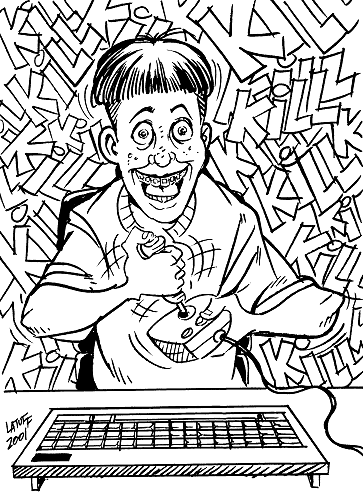
The Internet, critics say, gave Weise a place to find support for his dangerous ideas, and its vastness and anonymity made it difficult for other users to piece together his trail of anguish, rage and frustration. Others say that blaming the Internet is an easy and altogether wrong approach to understanding Weise's actions.
Online journals are extremely popular, especially with a generation that's grown up with a mouse and keyboard at hand. It's difficult to pinpoint how many teenagers and young adults participate in Internet chat rooms or have their own weblog, or blog. Some of the most popular sites include LiveJournal.com, Xanga.com and myspace.com.
Isolated, wired
High school students living in the remote Red Lake area are especially wired.
The 2004 Minnesota Student Survey showed that the teens in Red Lake spent more time in Internet chat rooms than teens statewide. The survey found that 42 percent of ninth-grade boys and 64 percent of ninth-grade girls there said they spent time in chat rooms.
Statewide, the numbers were 35 percent and 33 percent respectively. Students in the 12th grade in Red Lake were not surveyed.
Andra Medea has studied the roots of teenage violence and wrote "Conflict Unraveled: Fixing Problems at Work and in Families." She says that teenagers' actions, even violent ones, are motivated by a need for approval from their peers.
In the case of Weise, his admiration of Hitler and Nazi beliefs clearly weren't supported by those around him in Red Lake. But on the Internet, he found endorsement from people who shared his views. "Here was this kid who clearly couldn't have found this approval close to home," said Medea.
Blaming the Internet for what happened in Red Lake is only natural, said Mario Almonte, a New York commentator on technology and on-line culture, but it distracts from getting to the real reasons to Weise's actions.
"Every time something new comes along, some new technology, there are always those people who will look for easy answers to things. Each generation has tools that lend themselves to being abused, to being used by whatever twisted individual is out there," he said.
But it was Weise's own psyche that led him to look for those sites in the first place, Almonte argued. "You can say the Internet made it easier for him, but it wasn't the cause."
Creating journals
The vast majority of teenagers and young adults who join chat groups and participate in other online communities do not end up committing violence, he said. For them, the Internet is a natural and preferred way to communicate.
"There's also a benefit in that kids are able to find people like themselves on the Internet, and they can be halfway around the world. In one sense, it's comforting for them to know that someone else feels the way they do," Almonte said.
Michael Sticha, 22, is what's known as a "daylogger" on LiveJournal.com, meaning that he writes about his day. He updates his site every night, summarizing his activities and thoughts that day. He usually ends it with an editorial about current events. He also posts a photo of himself and his buddies on his LiveJournal site, along with a link to a Yahoo.com site where there are more photos.
"It's to let my friends know what I'm up to. It's an escape for me," said Sticha, a senior at the University of St. Thomas. "I can jot things down. I can freely write what I'm thinking."
It's also an outlet to express some of his views that he might not otherwise share with people. For example, last spring he wrote in a sparse, brutally honest way about why he thought Doug Mientkiewicz should be replaced.
Sticha explained that it's being able to say what you're really thinking and want to say, whereas in the non-cyberworld, you're always editing yourself before you speak.
He joined the site two years ago after hearing about it from a friend. At the time, he was using a notebook for a daily journal. "I thought being able to type it out on a computer would be faster," he said. "I wasn't too hip on people being able to see it."
But he got over his apprehension because he liked the web journal's interactive nature. It allows viewers to comment on his entries.
Besides, he's only received comments from people he knows. That's because Sticha, like many other bloggers, keeps his user name — the name his site is listed under — a closely guarded secret. Only five of his friends in the real world know what it is, so they're the only ones who can see it.
That is, unless someone who chooses LiveJournal's random search option just happens to stumble on it. He uses the random search himself to see what others have posted.
"For the most part, those I've clicked random on have been almost disturbing to me," Sticha said. "A lot of people are struggling in their lives. Journaling is a great outlet for that. People will usually jot down their feelings of sorrow before they jot down their feelings of happiness."
A lot of the entries out there are written by younger teens, he said, and it's hard to tell how seriously to take the feelings they express online.
"When you post online, you can really be anybody you want to be. You can say something just to get a reaction," Sticha explained. "When you're online, no one sees you. All you are is a user name, a person with a location.
"You feel almost like an ability to be someone worse than what you are."
Staff writer Ron Nixon contributed to this article.
Thousands of people, perhaps millions, are blogging (keeping online journals) for reasons similar to Weise's. People who would never go to the trouble of writing in a private diary are happy to make their thoughts public. Why? Because in cyberspace, you can shout your views to the world rather than keep them to yourself. Even if no one responds, your thoughts are on display. You can pretend you're communicating whether you are or not.
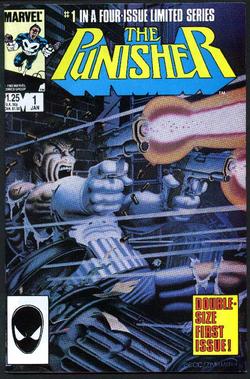
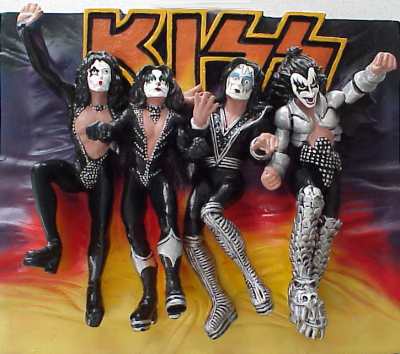
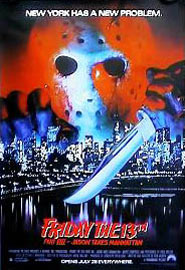
The media's influence
Weise was a product of a culture that glorifies violence as the solution to problems. This violence is evident in the media that surrounds us 24/7.
From the Arizona Republic:
School shooter liked to create macabre drawings, stories
Amy Forlit
Associated Press
Mar. 22, 2005 03:50 PM
BEMIDJI, Minn. -- He created comic books with ghastly drawings of people shooting each other and wrote stories about zombies. He dressed in black, wore eyeliner and apparently admired Hitler and called himself the "Angel of Death" in German.
His father committed suicide about four years ago, and his mother is a nursing home after an auto accident, according to news reports.
On Monday, 17-year-old Jeff Weise went on a rampage, shooting to death his grandfather and the grandfather's companion, then invading his school on the Red Lake Indian Reservation. Armed with two pistols and a shotgun, he killed nine people and wounded seven before shooting himself to death in the nation's bloodiest school shooting since Columbine High in Colorado six years ago.
Investigators are not sure exactly what set Weise off, but fellow students at Red Lake High said they saw what looked, in retrospect, like warning signs.
About a month ago, his sketch of a guitar-strumming skeleton accompanied by a caption that read "March to the death song 'til your boots fill with blood" was displayed in his English class, said classmate Parston Graves Jr.
Graves, 16, said he was thinking about that picture Tuesday. "I thought that was him letting everyone know" that he was going to do something, Graves said.
Graves said Weise had also shown him comic books he had drawn, filled with well-crafted images of people shooting each other. "It was mental stuff," he said. "It was sick."
Weise, who routinely wore a long black trench coat, eyeliner and combat boots, has been described by several classmates as a quiet teenager. Some of them knew about his troubled childhood -- relatives told the St. Paul Pioneer Press his father had committed suicide and his mother suffered head injuries in an auto accident.
Audrey Thayer, a friend of the family who also works for the Minnesota chapter of the American Civil Liberties Union office in Bemidji, about 30 miles from the town where the shooting occurred, said Weise's story was one of "devastation and loss."
Thayer said Weise had been living with his 58-year-old grandfather, Daryl Lussier, and Lussier's 32-year-old companion, Michelle Sigana. Thayer said Weise had been teased at school, but she didn't think that set him off. "In high school, you always have jabs at each other," she said.
Authorities said that during the rampage inside the school, Weise appeared to choose his victims at random. Some witnesses said he smiled and waved as he fired.
Michael Tabman, the FBI's agent in charge of the Minneapolis office, said Tuesday authorities had not established a motive for the shootings. Investigators said they did not know if there had been some kind of confrontation between Weise and his grandfather.
If Weise was quiet in school, he became an extrovert in cyberspace. It appeared he may have posted messages on a neo-Nazi Web site expressing admiration for Hitler and calling himself "Todesengel," German for the "Angel of Death."
Several notes signed by a Jeff Weise, who identified himself as "a Native American from the Red Lake 'Indian' Reservation," were posted beginning last year on a Web site operated by the Libertarian National Socialist Green Party.
In one posting, he criticized interracial mixing on the reservation and slammed fellow Indian teens for listening to rap music. "We have kids my age killing each other over things as simple as a fight, and it's because of the rap influence," he wrote.
While the writing of his postings on the neo-Nazi Web site may have been sloppy and full of typos, Weise was also able to write more polished prose for stories published on the Internet about zombies.
Weise's Hotmail address links him to frequent postings on one Internet forum called "Rise of the Dead," a site where contributors collaborate on stories about "average people attempting to survive in a zombie-infested world," according to the site.
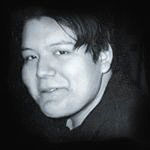
Weise, posting under the handle "Blades11," appeared to be a regular contributor to numerous fan fiction sites related to zombies. On one, Weise identifies himself as being from Red Lake and lists himself as an amateur writer.
He goes on to write, "I'm a fan of zombie films, have been for years, as well as fan of horror movies in general. I like to write horror stories, read about Nazi Germany and history, and someday plan on moving out of the US."
In a posting from Feb. 6, he agreed to continue contributing to a story line but added that things are "kind of rocky right now so I might disappear unexpectedly."
Fellow student Ashley Morrison, 17, said Weise liked heavy metal music and dressed like a "goth," with black clothes, chains on his pants and black spiky hair.
"He looks like one of those guys at the Littleton school," Morrison said, referring to the two teen gunman, members of the so-called Trench Coat Mafia, who killed 12 students, a teacher and themselves at Columbine in Littleton, Colo., in 1999.
School Killer's Animated Terror
Minnesota teen posted bloody Flash film late last year
To summarize, Weise created drawings, stories, comic strips, and computer animations. He liked zombie movies, heavy metal music, the goth culture, and Nazis.
What is the common denominator here? Writers and artists create their own worlds because it gives them control over reality. It gives them the power they often lack in the real world.
Comics, horror movies, hardcore music, and Nazism all have a similar theme: the righteous hero or heroes fighting the forces of evil. Using their power (strength, guns, guitars) to vanquish their foes. The battle is us, a small number of champions, against them, the bad, inferior, degenerate masses.
Exerting power over foes, defeating them, means feeling superior to them. It's a way to assert one's identity, to boost one's self-esteem. The more you denigrate or demonize your opponents, the better you can tell yourself you are.
Not coincidentally, white supremacists call their opponents "mud people," goths label them "brain-dead," and zombie stories literally portray them as corpses. In each reality, a small minority of people are special or "chosen" while the vast majority are worthless and hardly deserve to live.
Weise immersed himself in contentious, violent media influences. He sought black-and-white subcultures where he could be a member of the power elite. While it might be unfair to say the media caused Weise's outburst, it certainly seems to have fueled it. Weise acted in the only way he knew how to "win" in our society, as the media constantly encourages us to do.
Feel the power
Apparently Weise wanted his own version of "white power" or "black power"—a group identity based on strength, resolve, distinction, virtue, and purity. His choice of Nazis as a role model may have been a delusion, but it shows his deluded thinking. He wanted to be one of the few special ones, not an anonymous cog being ground down in the machine.
From the Pioneer Press:
Posted on Wed, Mar. 23, 2005
Muddled politics underlie neo-Nazi site
Teen gunman a frequent contributor to hate group's site
BY DAVID HANNERS
Pioneer Press
It is a tortuous, bloody path from German author Karl May, who died in 1912, and Jeff Weise, who died Monday, but the path is there just the same.
May, who never went farther west than Niagara Falls, wrote outlandish, violent novels about the American West and what he saw as the white man's noble pursuit and slaughter of the Indian.
Among his most avid readers: Adolf Hitler. Some historians believe Hitler may have gotten the notion for concentration camps, in part, from the reservations the U.S. government forced Indians to live on.
Weise, a 16-year-old member of the Red Lake Band of Chippewa, wrote in an online National Socialist discussion group last year that he admired Hitler. And authorities say that on Monday, he killed nine people — including seven at his high school — before killing himself.

Officials investigating the country's worst school shooting since Columbine said they'll be looking into Weise's posts to neo-Nazi forums, but they didn't know if his political or racial beliefs played a role in the shootings.
"It's premature to make that speculation," said Michael Tabman, special agent in charge of the FBI's Minneapolis office, who is heading the investigation.
Weise, writing under the pen names Todesengel — German for "angel of death" — or "NativeNazi," appeared to do most of his online writing at www.nazi.org, the Web site maintained by a group calling itself the Libertarian National Socialist Green Party.
On the site, the group it believes in "a resurrection of traditional values" and that it is "a think tank for environmentalist and nationalist ideals."
"Make no mistake; they're a hate group," said Molly Altorfer of the Jewish Community Relations Council in Minneapolis. "They are seductive because relative to other outwardly militant hate groups, they seem low-key. They couch their hate in this sort of new-agey social theory message."
But the anonymity provided by the Internet leads some organizations that monitor hate and extremist groups to believe the outfit's cyber bark was bigger than its real-world bite.
"The truth is, we do not know who is behind this Web site," said Mark Potok of the Southern Poverty Law Center in Montgomery, Ala. "There is no real party, no real group. This is probably one person and a computer."
On Tuesday, the Web site featured an article written by "Steve Martinez" of the "Nationalist News Network," in which the group's forum administrator, identified as "Atem," said the group "refused to wring hands over a 'tragedy'" — the word tragedy was in quotation marks — and said modern society was to blame for the school shootings.
"Weise participated in the forum in part because, unlike 'white nationalist' or 'white power' movements, the LNSG embraces all races as part of its vision of world nationalism," the article said. "His statements on the site reflected a frustration with the populist politics and materialistic arrogance of modern society."
The Web site's forum says it has 1,053 registered members (by comparison, another niche discussion forum, the Fender guitars discussion page, has more than 46,000) and some of them talked about the shootings in a discussion thread Tuesday.
"IMO (in my opinion), this is another chance for media/press and Jewish groups to portray Hitler once again as the 'evilest scum on earth', " wrote a poster using the name "Gasto."
Between Weise's first post at 12:09 a.m. on March 19, 2004, in which he asked if there was any age requirement for joining the group, to his 34th and final post on Aug. 2, the teenager said he admired Hitler, that his parents were American Indians, that the Holocaust never took place and that the races — including those on his Red Lake reservation — should be kept pure.
It takes a fractured reading of history, though, to think that a true National Socialist movement would accept an American Indian, said Eric Weitz, director of the Center for German and European Studies at the University of Minnesota.
"A kid like that could read about the racial purity and take that in and not understand that racial purity was always connected to a racial hierarchy, that there were superior and inferior races," said Weitz, who teaches history. "Hitler's term was that there are 'culture-producing' races and 'culture-destroying races … and Indians certainly would not have figured into culture creating. They were certainly insignificant in his cosmology."
Historians have said that Hitler, influenced by Karl May's popular books, would sometimes play "cowboys and Indians" while on walks around his Bavarian headquarters. He was so taken with May's writing that he set up a museum to honor him.
At the Nuremberg War Crimes Trial following the war, Nazi Reichmarshall Hermann Goering claimed that Germany's Final Solution to rid the country of Jews was no different from the U.S. government's policies towards American Indians.
Potok of the Southern Poverty Law Center said that while he has not heard of any Native American Nazis, the notion isn't as far-out as it might seem.
He said such people "are, typically, young kids who want to associate themselves with power. You're on the side of the Panzer tanks and big military formations, as opposed to being taken off to the gas chambers."
Posters to the nazi.org Web site, including Weise in the past, have lashed out at those who call them neo-Nazis. The prefer to differentiate themselves as National Socialists, which was the name of Hitler's governing party.
Altorfer of the Jewish council said the Libertarian National Socialist Green Party is unusual because its "strain of national socialism doesn't have any purity requirements."
"If you know anything about other neo-Nazi groups, they wouldn't give a Native American the time of day," said Altorfer. "They're strictly and Aryan group. They're not looking to induct any minority folks."
"The truth is, we do not know who is behind this Web site. There is no real party, no real group. This is probably one person and a computer."
Even if Weise got Hitler's message about racial purity wrong, his writings demonstrate his mindset. Like Hitler, he felt put upon by his inferiors, the unwashed masses, the mindless "zombies" around him. Like Hitler, his solution—the one he fantasized about—was to eradicate his real or imagined enemies. "Kill or be killed" was at the root of Hitler's mania and Weise's also.
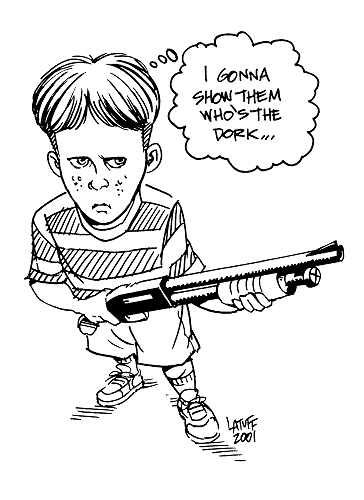
Weise got what he wanted
The Internet gave him the validation and acceptance he needed. The shooting gave him his 15 minutes of fame, and more.
From the Pioneer Press:
Posted on Sun, Apr. 10, 2005
Weise's words, images keep Web buzzing
School shooter's animations, stories spur fascination, debate
BY DAVID HANNERS
Pioneer Press
In the online world where he felt most at home, Jeff Weise has gained more attention in death than he ever did in life.
His gore-soaked animations, seen by only a handful of people before his March 21 shootings in Red Lake, Minn., have now been viewed more than 375,000 times. His short stories about zombies had limited readership beforehand but now have been seen by thousands.
Neo-Nazis have hailed him as a "hero" and claim he gave his victims' lives "meaning" by killing them.
Society's morbid fascination with misfortune is nothing new, and many people responding online have castigated Weise. But with the Internet, interest is fed by a flood of information and few filters, such as the media, says Linda Jean Kenix, who lectures on mass communication at the University of Minnesota.
"There's a long-standing fascination with violence and people on the edge of society, but how those stories were told to a mass audience is very different in the 1920s compared to how it's told today," Kenix said. "When you were reading stories about Bonnie and Clyde, they were these sweeping mysteries that painted these kind of mystical people. But on the Internet … it's a much different playing field. There's nothing controlling the content going out."
The shootings have even spawned a couple of conspiracy theories, cooked up by those who find it difficult to believe a 16-year-old kid with a history of depression, drug use and suicide attempts could be capable of killing nine people and then himself.
"With all this talk or rumor about the Fourth Reich emerging into existence, I would not be surprised if Jeff Weise was just a test run before they actually activate certain sleepers for the Real deal," wrote one poster at www.abovetopsecret.com, a Web site for conspiracy theorists and one of Weise's favorite online haunts.
But as Weise himself observed last October in reply to someone who had reviewed one of his animations: "Random violence, a suicidal mass murderer and people who blame the media afterwards. Yep, must be the 21st Century. God bless America."
Weise shot and killed his grandfather and his grandfather's female companion, then went to the high school on the Red Lake Indian Reservation and killed seven more before killing himself. He wounded seven others.
He left no notes explaining his actions. Federal authorities have arrested and charged one other youth, Louis Jourdain, 16, with conspiracy in connection with the shootings. Jourdain is Weise's cousin and the son of Floyd "Buck" Jourdain Jr., tribal chairman of the Red Lake Band of Chippewa.
Sources have said the two allegedly planned the attack, in part, over the Internet.
In the aftermath of the shootings, friends and classmates described Weise as creative, troubled, depressed and given to violent fantasies. He was also an admirer of Adolf Hitler, a fan of George Romero's horror films, was taking high doses of the anti-depressant Prozac and had attempted suicide as recently as last summer.
While Weise may have been relatively withdrawn in real life, his musings and creative activities — though nearly always dark and violent — met acceptance on several forums online.
While some Web sites he contributed to have since removed his writing, others have said they'll keep making his work accessible.
Online discussion threads have been buzzing with talk about Weise; one such thread at abovetopsecret.com runs to 21 pages and has over 400 posts. While some people have expressed sorrow over his actions, others haven't been so forgiving.
"He may have been bullied … so what … make like Timberlake and cry me a river," wrote a moderator at abovetopsecret.com who uses the online name Alien. "He's no different in that respect than multitudes of others. The only real difference is this guy was weak. He was pathetic. He chose to take the lives of others instead of just his own. His weakness cost lives. Plain and simple."
It is believed Weise created at least five Flash animations, a popular method of producing and sharing homemade cartoons online. While his first two animated movies, "Target Practice" and "Clown," have gotten a lot of attention after the shootings, three other films attributed to him have also popped up.
Weise had submitted "Target Practice" and "Clown" to www.newgrounds.com, a Web site where people can watch and then write reviews of the animations. Before March 21, there had been 38 reviews.

Since the shootings, nearly 2,700 people have added reviews.
Weise is also believed to have created three other animations — "Hitman," "Pigeon Hunter" and "Gangland." All feature guns, violence and killing.
Weise's animations appear on www.rogertoons.com, a Web site maintained by Adam Kochanowicz, a teacher in Omaha, Neb. In an interview, Kochanowicz called Weise "a real good animator."
"For a 16-year-old, it was incredible," he said of Weise's work. But the violence in his animations "was just sending off clues," said Kochanowicz.
"That does show that he was openly communicating with the public and describing his depressions and emotions. He wanted people to understand him," he said.
Indeed, many have claimed Weise's writings and other creative work should have raised warning flags. But that view is questioned by Dr. Richard Lawrence, a professor of criminal justice at St. Cloud State University who has written extensively about school crime and juvenile justice.
"They're only red flags if they're apparent and obvious to those around us. He did not announce them to a public forum," Lawrence said. "In retrospect and hindsight, our vision is very good. But the fact is, Jeff didn't put those in a public forum where we could see them and hear them and act on them."
Kenix said that some are concerned that the Internet's anything-goes environment affects impressionable young minds like Weise and his peers.
"In his own age group, the fascination with death, the fascination with violence, the Internet is ripe for that," she said. "There are no restrictions, there's no caveat on what you can see."
On the neo-Nazi site where Weise expressed his interest in Hitler's National Socialism movement, posters have called him a "hero."
The site's spokesman, Bill White, who describes himself as a 27-year-old Virginia-based real estate developer, wrote that Weise's actions gave meaning to his victims' lives.
"What were these nine people ever likely to achieve on their own? They were not part of anything greater than themselves, and would not naturally have become part of anything greater than modern consumer society — which is nothing," he wrote on the site.
"However," he continued, "by being killed in a spectacular fashion, their existence at least became known to the world, and thus was able to shape consciousness — and thus became something greater than the typical anonymous and wasted life."
Another poster disagreed.
"Giving those people a more meaningful life … sheesh. Where do you come up with that?" the person wrote. "Yeah, some meaning."
From the NY Times:
March 27, 2005
OP-ED CONTRIBUTOR
By LIONEL SHRIVER
London
ADOLESCENTS don't conceive the notion of strafing their classmates in a vacuum; they get the idea from cable TV. Bad news in itself, the 10-fatality reprise of the American school shooting last week at the Red Lake Indian Reservation in Minnesota bolsters the archetype. It makes a trend that had seemed to subside since Columbine in 1999 seem current again, and prospectively gives more boys big ideas.
The lessons we've been meant to learn from school shootings have been legion. We need better gun control. We need to be more understanding of misfits. We need to stop bullying. We need to curtail violent films and video games. So far, the suicide of 16-year-old Jeff Weise and his murder of nine people, including his grandfather, has fostered another familiar homily: We need to recognize the "warning signs."
Jeff Weise's "warning signs" have been widely publicized. He drew ghoulish cartoons and wrote gory short stories. He aped his predecessors in Colorado by wearing a black trench coat. On the Internet, heartbreakingly, he admired Hitler and flirted with eugenics -- although the Nazis would hardly have championed the pure genetic line of Mr. Weise's Chippewa tribe. Predictably, all this dark ideation took place against the backdrop of a broken family and a forlorn personal life.
But Monday-morning quarterbacking has a reputation as cheap for good reason. A host of teenagers have morbid inclinations that they express through art and schoolwork. The very fact that the style that Mr. Weise adopted has a name -- Goth -- implies that thousands of other youths don the same dour garb. Many adolescents try on outrageous, painfully incoherent ideologies to set themselves apart. In her book "Rampage," Katherine S. Newman cites factors like access to "cultural scripts" from violent media, victimization from bullying and social marginalization. But such broad characteristics apply to half the children in the country.
I, too, researched school shootings for my seventh novel, about a fictional version of same. But the more I read, the more disparate these stories appeared. The boys had in common what they did, but not who they were or why they did it. If another school is shot up again, rest assured that the culprit will have exhibited his own eccentric set of "warning signs," like Mr. Weise's constantly changing hairstyles, that if plugged into a computer would finger 10,000 other innocents as murderous time-bombs.
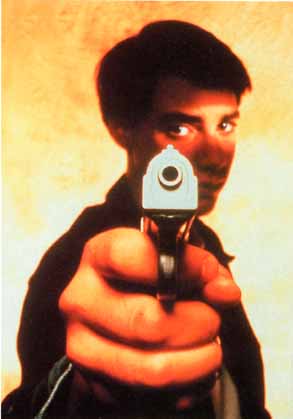
But I did identify one universal. The genre is now sufficiently entrenched that any adolescent who guns down his classmates aims to join a specific elect. Like Red Lake's, the public shootings are often a cover for suicide, or for the private settling of scores with a parent or guardian. But a school shooting is reliably a bid for celebrity. As for murder-suicides like Jeff Weise's, even posthumous notoriety must seem enthralling to someone who feels sufficiently miserable and neglected.
Whether we care to admit it, the calculation these boys are making is culturally astute. You do not make headlines by getting an A on your report card. So long as we make a minimal distinction between fame and infamy -- and consistently accord infamy a measure more fascination -- any smart teenager is going to take the easier, more spectacular route to glory and opt for ignominy over achievement. Far more Americans now know the name Jeff Weise than the winner of last year's Nobel Peace Prize. Only two days after the shooting, a Google search of "Jeff Weise" and "Red Lake" scored more than 8,000 hits. If our boy wanted attention, he got it.
Am I the only one to find those thousands of hits shocking? Am I the only one to feel queasy over the painstaking examination of this boy's psyche -- perhaps including this very article?
The Star Tribune of Minneapolis: "Jeff Weise: A Mystery in a Life Full of Hardship." Minnesota Public Radio: "Who Was Jeff Weise?" There's hardly a teenage boy who wouldn't covet those headlines for himself. Are we not dangling a prize of outsized pity for boys with the guts to compete for it? Are we in danger of being too sympathetic?
Surely no single factor explains the perniciousness of school shootings more than the intense news media focus they draw. Too late, we are now combing Mr. Weise's reactionary Internet postings, grisly drawings and gruesome short stories. We are rightly wrenched by his fractured family life -- his mother's brain damage, his father's suicide.
But I grew up in North Carolina alongside any number of anguished young men, a few of whom likewise chose to leave the building with a shot in the head. Most humble suicides, however, don't take nine unwilling people with them on the way out the door.
Sympathy, of course, is not zero-sum. We can afford to lavish it unsparingly on all parties in tragedies like this one. But one might make a case for ordinal sympathy. That list should be topped by nine dead people who should have been eating breakfast this morning. Next, their grieving families. The seven wounded. Jeff Weise's extended family, living with shame and perplexity hereon. The Red Lake reservation, now receiving the kind of attention it doesn't want. The nation at large, in which extravagant media response to this killing has once more raised the likelihood that it will happen again. Jeff Weise -- overweight, politically confused lonely guy, but also a killer -- belongs on the list, but last.
Otherwise, reserve a special compassion for any folks in Mr. Weise's orbit, like the doctor said to have dismissed the boy's cutting himself as "a fad," implicitly being made to feel that by not reading the "warning signs" they are in some way at fault. The hurling of blame constitutes a secondary wave of violence that leaves a second set of scars. Still coping with gratuitous murder, counselors and teachers, parents or guardians, friends and neighbors of the gunman grapple with an equally gratuitous guilt.
For no one should have seen this coming. Screwed-up comes in as many flavors as ice cream, and the merest fraction of troubled boys go literally ballistic at their schools. If occasionally fatal, the combination of despair and grandiosity is as common -- and American -- as apple and pie.
Lionel Shriver is the author of "We Need to Talk About Kevin," a novel.
So Weise wanted some validation he wasn't getting in real life. When sharing his stories and art proved insufficient, he acted them out "live." It seems fair to call his final act a sick kind of performance art.
"Be a Victor or Be a Victim," goes one infamous heavy-metal song. I suspect Weise chose to go out a victor. Like many people who commit suicide, he sent the world a message: "Look at me. I'm somebody who mattered. I'll show you a thing or two. If I can't be an American idol in life, I'll be one in death!"
Shriver's analysis is interesting, but I'd say his message is flawed. We can and should read the warning signs and see these tragedies coming.
True, we can't predict which troubled boy will go ballistic. But we can predict that a certain percentage will drop out...turn to crime, substance abuse, or domestic violence...and hurt others or themselves. And that a small percentage will kill themselves and take others with them.
Our inability to predict which children are the worst off isn't an excuse to do nothing. It's a reason to help every child—with better schools, more social services, and a culture that promotes caring over contention.
What to do about it
How do we prevent incidents like this from happening again? When kids are involved, part of the answer is to change the environment they endure daily. The stress, competition, peer pressure, rules, regulations, rigidity, gossip, teasing, bullying. In short, the impersonal and inhuman nature of it all—the paucity of communication and compassion.
From the Christian Science Monitor:
USA > Society & Culture
from the March 25, 2005 edition
Schools using many lessons of Columbine
Despite this week's tragedy in Minnesota, school safety has improved.
By Amanda Paulson | Staff writer
When teens in Marshfield, Mass., started fantasizing about a massacre in their high school, a few began to have doubts. Fortunately, there was an adult they trusted, a school resource officer, who was alerted to details about the plot last fall.
The officer quickly investigated. Police later found maps, lists of guns and ammunition to buy, and bomb-building instructions. In the end, Tobin Kerns and Joseph Nee were charged with conspiracy to commit murder, promotion of anarchy, and threatened use of deadly weapons at school.
Instead of a headline-grabbing tragedy, the Marshfield incident is simply one more tale of what might have been if someone had not talked and someone else had not listened.
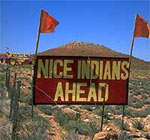
Yet creating those relationships and spotting warning signs can be difficult, as residents of Red Lake, Minn., now know. The attack there Monday is the worst school shooting since Columbine. But even as the nation mourns the tragedy, experts on school violence are calling attention to how much has been learned in the six years since Columbine, and how much better prepared schools can be to avert such disasters -- if they have the will, the time, and the resources to do so.
Certainly, school guards, emergency plans, and metal detectors can help when violence is attempted. But preventing attacks often comes down to the same things that helped at Marshfield: good relationships, listening, spotting warning signs, and persuading students to overcome the hallway code of silence -- that it's OK to report threats. "These shootings are not spontaneous. They're not random. This happens over time," says Paul Viollis, president of Risk Control Strategies, a security consulting firm.
Experts say a common thread in nearly all the major incidents is that the shooter tells a few friends or others of his plans. There are also often warning signs that seem, in retrospect, like red flags. Mr. Viollis, in fact, says many shooters have said afterward: You should have listened. "This is about reengineering our cultural thinking as it pertains to security," he says. "We have to embrace our responsibility."
The facts in the Red Lake case, and insights into Jeff Weise, the shooter, are still emerging. But early signs indicate commonalities with other high-profile school shooters in the past: grisly artwork and writings, struggles with depression and loneliness, mentions to friends that he'd like to shoot up the school, a threat to kill himself.
He also reportedly wore a trench coat and dark eye makeup, listened to violent bands like Marilyn Manson, and posted messages applauding Hitler on Nazi.org and other websites. But experts caution school officials against being too quick to create "profiles" of potential shooters based on external traits. "There isn't any profile," says William Modzeleski, a security specialist at the US Department of Education (DOE). "Some are brilliant, many aren't. Some of them have intact families, some don't. Some are alpha males. You can't look at those characteristics. You have to look at behavior traits."
A collaborative study between the DOE and the US Secret Service of 37 acts of violence in American schools found that the incidents were rarely impulsive. It showed that someone almost always knew of the plot. The perpetrators had often been bullied, experienced a significant personal loss, and exhibited striking changes in behavior.
In the case of Weise, friends said that he had been haunted by his father's suicide several years earlier. He left Minneapolis to live with his grandfather after his mother was hospitalized with head injuries following a car accident.
Mr. Modzeleski and others are convinced the answer lies not in more metal detectors or school guards, but in a shift in culture. "It's easy to focus in on shootings, but we also need to look at what we're doing about harassment, teasing, bullying," he says. The real key is "putting adults in there that kids can talk to them when they have a problem, making sure they can listen, that they have the willingness to listen, and can provide them with guidance."
But even when warning signs exist, it can be hard for a school to piece the information together and recognize a kid in trouble. Often adolescents and adults don't communicate enough, says Kenneth Trump, president of National School Safety and Security Services, a consulting firm in Cleveland. "The pieces never seem to come together until after the tragedy."
He's seen a few schools start "child-study teams," in which staff and faculty meet regularly and share concerns about certain kids. "Everyone is typically so stressed for time, that if you don't make a conscious effort, it's very easy to lose a kid," he says.
Since fellow students are often the ones to say afterward that they had heard about plots but didn't take them seriously, schools are making efforts to convince them that notifying a staff member isn't "snitching." It's a way to save lives.
In many of the cases in which plots were uncovered before an attack -- from Cedar Park, Texas, to Lovejoy, Ga. -- the key was students who came forward. After the conspiracy was discovered in Marshfield, the school put in place an anonymous tip line. "A student can alert us to the fact that another student might be saying bizarre things or acting weird, 24 hours a day, seven days a week," says Thomas Kelley, superintendent of the school system.
One challenge, say experts, is that resources for antiviolence programs are scarce. Trump notes that President Bush's 2006 budget proposes eliminating the state grant allocations from the Office of Safe and Drug-Free Schools, a main source of antiviolence funds for states.
Nationally, the office works in some 150 communities, with programs that target students for mental-health treatment and try to promote a culture of safety. By tackling the little problems early on, they hope to keep the Jeff Weises of the world from ever getting to such a desperate place.
Other schools are trying a program modeled after Secret Service techniques. Administrators and students are trained to investigate and deal with threats, both big and small. In a pilot project in 35 schools, authorities resolved 188 student threats without any being carried out, notes Dewey Cornell, director of a youth violence project at the University of Virginia.
"One concern is that after a shooting like this there will be a backlash in schools. They'll tighten up zero tolerance, and begin expelling or suspending students who make any kind of threatening statement," he says. "That would be counterproductive, since it closes off communication."
Indeed, many experts note that the threats and interest in violence are often cries for help that go ignored. Weise is "part of the tragedy," says Viollis. "He's not just the villain here, he's a victim."
• Staff writer Sara B. Miller contributed from Boston.
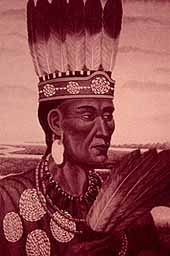
Commentary > The Monitor's View
from the March 25, 2005 edition
Red Lake and Emotional Literacy
The Monitor's View
Nearly two of three Americans say school killings like Monday's at the Red Lake Indian Reservation will take place regardless of actions taken by government or society. In other words, kids who turn bad and violent can't be helped or even stopped.
That undue pessimism toward offtrack youth, however, hasn't stopped public schools from beefing up security since the 1999 Columbine High School killings. But while they've put faith in guards, metal detectors, surveillance cameras, zero-tolerance policies, and other safety steps, they've made scant progress toward a fundamental prevention tool: Turning schools into better communities of caring, support, and belonging.
It would be difficult, of course, to say whether 16-year-old Jeff Weise might not have killed seven people at his rural Minnesota school if the school had somehow helped him from becoming a loner, an object of teasing, and a delinquent sent home to do his studies. His home life had been shattered by his father's suicide and mother's incapacitation.
Still, that school and the many thousands of others should reevaluate how to enhance the experience of acceptance for children and pay attention to their social needs in order to help develop their emotional literacy.
Too many schools in these days of high-stakes testing mainly nurture competition and individualism ahead of collaboration and fostering a school's community. And too many students perceive their schools as uncaring environments where bullies rule and a lack of peer acceptance is considered normal.
While schools are still safer for children than many other public places, fearful reaction to the multiple murders at schools over the past decade has created a tension in classrooms and hallways.
To dispel such fear, many schools teach tolerance and respect for diversity. In 1998, the US Education and Justice Departments sent schools a guideline called "Early Warning, Timely Response: A Guide to Safe Schools" that advises them on providing kids with positive mentoring and better group socializing. One important tip: Keep schools clean, warm, and repaired to help create a respectful community atmosphere.
The Red Lake massacre should refocus efforts toward helping kids feel included from the start as a way to prevent bullies and biases from turning them into armed, vengeful misfits. Just trying to spot errant children in the classroom or blocking them at the school door when they mean harm may be too late.
Schools must be more than knowledge factories.
Is there a doctor in the house?
The problem involves more than just education. Schools have cut back on counseling. The government spends less on healthcare for Indians than it does for federal prisoners. Many Native people are too embarrassed or afraid to seek professional help for mental illness. Society encourages people to "suck it up" and "tough it out" for any hurt that isn't bleeding profusely.
From In-Forum News:
Despair just a symptom
By Patrick Springer, The Forum
Published Friday, April 08, 2005
GRAND FORKS, N.D. -- The recent deadly school shooting spree at Red Lake, Minn., offers a graphic illustration of the need for better mental health services on Indian reservations, a counselor said Thursday.
"Red Lake should wake us up and shake us by the collar," said Doug McDonald, a psychology professor who led a mental health response team after the March 21 shootings that killed 10 people.
More research is needed to devise effective counseling strategies for American Indians, whose cultures are much different than the majority culture that dominates counseling and other areas of medicine, said McDonald, an associate professor of psychology at the University of North Dakota.
"Most of the tribes I'm aware of don't even have a word for depression," said McDonald, a member of the Oglala Lakota Tribe.
Also, data collected by the Indian Health Service aren't specific enough in defining mental disorders, he told an Indian health conference at UND.
"We don't even have a baseline to begin to talk about the problems," he said. "We know it's huge and monstrous and it's out there."
Mental health professionals need to know what role "cultural competency" -- including knowledge of a tribe's oral history and language -- can play in helping patients to overcome their problems, he said.
"We desperately need answers for these kinds of things now," McDonald said.
The need for health care that is tailored to American Indian culture was a major theme of the conference, hosted by the Grand Forks Human Nutrition Research Center on the UND campus.
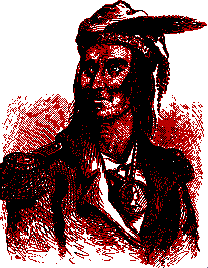
A variety of research projects in North Dakota are exploring ways to prevent or treat diabetes, which is epidemic among American Indians.
Bismarck's United Tribes Technical College, for instance, is involved in research to determine whether 11 traditional wild plants, such as prairie turnips and morel mushrooms, traditional American Indian food staples, can provide nutritional benefits that can help reduce obesity and diabetes.
And a research project led by a nutritionist at South Dakota State University is evaluating the ability of a traditional Northern Plains Indian diet -- higher in protein and lower in fat and carbohydrates than contemporary diets -- to control diabetes.
Sen. Byron Dorgan, D-N.D., vice chairman of the Senate Committee on Indian Affairs, spoke to the conference via telephone link from Washington. He said he is working with Sen. John McCain, R-Ariz., to provide more funding for health services to serve Indian communities.
Dorgan agreed with McDonald that more needs to be done to address mental health needs on reservations, plagued with high rates of unemployment and drug and alcohol abuse.
The shootings at Red Lake, believed to have been caused by a 16-year-old boy who was being treated for depression, are symptomatic of the problems in reservations, where Third World conditions prevail, Dorgan said.
Standing Rock Reservation south of Bismarck is coping with a recent rash of five suicides -- and almost 300 suicide attempts in the last year. At Spirit Lake Nation near Devils Lake, a 14-year-old girl recently committed suicide after spending weeks curled up in a fetal position, obviously in despair. Her sister and father had committed suicide earlier.
"It shouldn't have happened," Dorgan said of the girl's suicide. "There should have been intervention."
The government spends twice as much, per person, on health care for federal prison inmates than it spends on health care for American Indians.
"We really need as a country to look inward here and make serious progress," Dorgan said. "These people are the First Americans and they should not be last when it comes to health care."
Inside the warrior society
Beyond treating people more humanely, helping them with their problems, we need to change our cultural thinking. We need to make more love and less war, to paraphrase the deep thinkers of the 1960s. A society that worships guns and violence will always have some of both.
From the Provo (Utah) Daily Herald:
Thursday, April 07, 2005 -- 12:00 AM
There will be other Red Lakes, other Columbines
Robert Myers
It has happened once again. And yet again many express shock. Jeff Wiese's rampage at Red Lake (Minn.) High School killed 10. Everyone compares this to Dylan Klebold and Eric Harris' murder of 15 at Columbine (Colo.) High School almost six years ago.
The comparisons are valid, but so are the contrasts. In many respects it is another case of "the more things change, the more they stay the same."
Much is different at high schools since Columbine in 1999. We are more wary of possible violent outbursts at schools (but do not think it could happen at our school).
Many high schools have a police presence or metal detectors. At the Red Lake school surveillance cameras were trained on the halls.
Bullying behavior has been studied and highlighted as a serious problem. Most schools and local police have a response plan for violent events. These are Band-Aids and window dressings, which have induced more complacency than solutions, unfortunately.
Despite 19 violent deaths in schools this year so far and 234 students killed at schools between 1992 and 2000, schools are among the safest places our youths can be. The risk of death away from school is 100 times greater. Nevertheless, when violent tragedies occur as one did in Minnesota, people seem perplexed.
They should not be surprised, however, because little in the broad culture in which these nightmares occur is different. We are still obsessed with guns. Gun laws are unchanged since Columbine, and estimates suggest that guns are kept dangerously accessible to as many as 2.6 million children in 1.4 million homes.
Violent video games and films are more normalized in the culture than ever. Many parents allow young children to play "Grand Theft Auto" without a clue about the violent, abusive behavior it contains. "Halo 2," released last fall, is one of the largest selling electronic games ever. The Internet makes accessible all manner of extremist groups and ideas, providing acceptance and identity to loners like Wiese. We insist on teaching boys to be tough rather than empathetic.
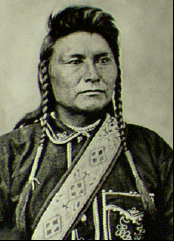
What is different in the Red Lake case from many shootings is that it was done not by a comfortably middle-class white male but rather by an American Indian boy, at odds with peers and ostracized within his own school. American Indians, in 562 federally recognized groups comprising only about 1 percent of American culture, are as forgotten as they are neglected.
Disturbing disparities between American Indians and the rest of American society are persistent. With a poverty rate of 26 percent, twice the national norm, with high rates of unemployment and alcoholism, and with death rates from firearms and suicide nearly triple those for the white population, Indian populations are at alarming risks.
The Red Lake Chippewa Nation fits these features.
We should not be surprised when such tragedies occur in a marginalized population; we should be surprised that they do not occur more often.
In an Alfred University study of "Lethal Violence in Schools," students nationwide identified important issues and themes that remain critically relevant. Most students asserted that anyone who wants to bring a gun to school could easily do so.
They said we need to reduce ostracism and bullying because the primary reason for school shootings is revenge. Students who feel excluded, alienated and powerless are most apt to strike out. Bullies should not be tolerated. Improved relations between teachers and students will reduce the threat of deadly violence.
Students want to feel that their teachers care more about them and should take a more active role in their lives. Teachers and school administrators need to work harder to cultivate trust with their students. Shifts in attitude in these areas would foster more positive, safer educational settings.
Wiese's classmates knew something was wrong and describe a boy who displayed most of the warning signs for serious trouble. No one intervened.
It may be that in our complex, stratified society of nearly 300 million people, obsessed with guns and believing that a steady diet of violent entertainment is appropriate, there is little that can be done. Perhaps these occasional tragedies are inevitable.
Students themselves tell us otherwise, however. We would do well to listen to them if we are sincere about preventing another Red Lake or Columbine.
Robert Myers teaches anthropology and coordinates the violence studies minor at Alfred University in New York.
It isn't a coincidence that these shootings usually happen in conservative rural or urban areas where guns are an accepted part of life. These places have a macho culture where being strong and silent is a virtue. Where might makes right, tough guys rule, and God is the ultimate authority figure.
We can see this mentality in the martial lust that has gripped the country since 9/11. We can see it in a president that smirks at executions, invades countries on false premises, and tries to cover up the consequences (coffin photos censored, torture crimes dismissed). Our solution for most problems is "shoot first and ask questions later." That should be our national motto, not "In God we trust."
We glorify our warriors and alpha males: George Washington, Daniel Boone, Billy the Kid, John Wayne, Rambo, George W. Bush. Andrew Jackson, our own would-be Hitler, is honored on the $20 bill. Weise did what all "good" Americans do to gain attention: prove how rough and tough he was.
Native perspective needed
Traditaional Native culture provides a corrective to America's mainstream culture of winner-take-all competition and aggression. It emphasizes community, kinship, connection—the whole "it takes a village" mentality.
This compassionate, humanistic culture is what's missing in America today—even on Indian reservations, unfortunately. What's left is "the individual as solitary gunslinger and society as a hostile frontier," as one article put it.
From the Minneapolis Star Tribune:
At Red Lake, a people's pain
Gabrielle W. Strong
Published March 27, 2005
Gabrielle W. Strong is member of the Sisseton-Wahpeton Dakota Oyate. She is program officer for the Grotto Foundation, where she administers its Native Language Revitalization Initiative and American Indian Family Empowerment Program. She served for 16 years as executive director of Ain Dah Yung (Our Home) Center, a local shelter and service agency for American Indian youth.
Wakanheza kin hena — For our children, our sacred beings. Han, mitakuyepi (Greetings, my relatives). In the aftermath of tragedy, I share the grief of the Red Lake families and of a larger Native community that mourns the lives of its youth. As we agonize over how or why this could happen in one of our tribal communities, there is solace and insight to be gained from the root of our culture, its language. That I can only properly greet you as relatives in my language is a lesson in and of itself.
The literal Dakota translation for children is "sacred beings." Its meaning reveals a deeper philosophical and spiritual concept — that which is sacred is to be cherished, honored and respected. Our indigenous languages are embedded with lessons about how to relate to one another, how to care for one another, how to connect with the natural and spiritual world. Mitakuyepi, today we struggle with a pervasive sense of disconnection. It encroaches on our family and community time together and on the priority we give to children, our environment and the most vulnerable, troubled among us.
That disconnect drives grim statistics that persist about the conditions in which Native youth are living — disproportionately higher rates of poverty, suicide, out-of home placement, poor academic achievement and incarceration. That Native youth have been alienated from a predominant, mainstream non-Indian culture is perhaps more easily understood and acknowledged than the alienation that some of our youth feel within their own families and communities.
Residual effects of colonization can still be felt today on every aspect of Native life, including a devastating loss of language. Intergenerational and community healing must be done; the beauty and resiliency of our language and life ways still hold the key to that healing. This is our responsibility, our sacred trust.
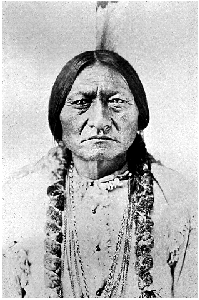
Dakota teachings instruct us to be medicine for one another. That means supporting each other, talking with someone in need of guidance, praying with someone, or simply listening. Sometimes it means just being present, or greeting someone with a handshake and a smile. These kinship connections are intrinsic to our health and well-being.
Yet, we've all become increasingly overreliant on Western diagnostics and treatments. We've learned to reach for bottles of antidepressants and other drugs instead of just reaching out. When someone is in need, a relative must respond. That is the role of our tiospaye, our extended families, translated as "those who cook together."
There are places where indigenous people with similar histories of colonization are preparing youth who are strong in their tribal identities; who grow up to become bold, durable citizens who are academically, politically, economically and spiritually empowered. There are schools where the indigenous worldview, language and kinship connections are validated each day; where the entire school faculty stands at the entrance and sings a welcome song to the children each morning. Those models are a far cry from the police cars and metal detectors at many schools today.
I don't know why Jeffrey Weise took so many lives and his own. But I'm certain that he felt great pain. I don't quite understand his affinity with the politics of Adolf Hitler, who drew from the U.S. Government's Indian extermination policies in developing his own. But it is clear that the messages and images of a pop culture, much of it spewing hate and obscenity, can be piped into any community or any home. The digital divide is not so wide any longer, and all children can be seduced by these influences.
Those of us affected by a holocaust experience share a similar traditional story: A community watched in horror as babies floated down a river, so they waded into the river to save the babies from drowning. But the babies kept coming. Finally, someone decided to wade upstream to stop the babies from falling into the river.
These ancient stories provide time-release wisdom for everyone; when it comes to children, we share responsibility. The well-meaning but knee-jerk reaction to this tragic event on the part of some policymakers is to reinforce school security. We're big on enforcement and punishment, but those policies are useless without prevention and intervention.
We lament the lack of resources available for children's services and quality education. Yet we're more apt to provide the ambulance waiting at the bottom of the cliff than to support ways to keep children from falling. We must make policy and funding decisions, based on the right priorities.
Make a child your priority today. Honor the sacredness and connect with a child every day. Before your children go to sleep tonight, ask them what made them smile, or whether anything made them sad, or afraid. Do this every day, and you or your child may become one of our relatives wading upstream to the river's source.
Mitakuye Owasin, All My Relations.
© Copyright 2005 Star Tribune. All rights reserved.
Would Weise's situation have been any different if our culture had given him a message of hope? If he had seen Natives like him succeed in movies, video games, and comic books? It's impossible to say, but it couldn't have been any worse.
How many of us have turned our lives around because of something we saw or heard? Perhaps a grandmother with an encouraging word, or a poster of some exotic land. Life choices are often made out of things this small.
As one trivial example, I'm arguably here today, doing this work, because a 2nd-grade art class had us make faux kachina dolls. What if we had made origami swans instead? I probably wouldn't know a thing about Indians and would have had an entirely different career.
Final note
Sadly but not surprisingly, several conservative commentators exploited this tragedy to score ideological points. A couple referenced the Washington Post article at the beginning of this posting. Their goal: to blame the Indians for their own problems, including Weise's shooting. Guns don't kill people, they might argue; liberals and their values kill people.
These screeds earned them a spot in the Stereotype of Month contest and a severe tongue-lashing, as noted below:
Red Lake tragedy in the Stereotype of the Month contest
"Indians were warriors" so "there was no Indian 'holocaust'"
"Washington Post on the Warpath" over Bush's silence
"Self-segregated" Indians should "embrace assimilation"
Cartoon: Native with tracking guide can't spot murder clues
Yeagley: Lack of "warriors" to blame for Red Lake tragedy
Related links
Why Americans commit suicide
Why white boys keep shooting
Violence in America
Native vs. non-Native Americans: a summary
|
. . . |

|
All material © copyright its original owners, except where noted.
Original text and pictures © copyright 2007 by Robert Schmidt.
Copyrighted material is posted under the Fair Use provision of the Copyright Act,
which allows copying for nonprofit educational uses including criticism and commentary.
Comments sent to the publisher become the property of Blue Corn Comics
and may be used in other postings without permission.